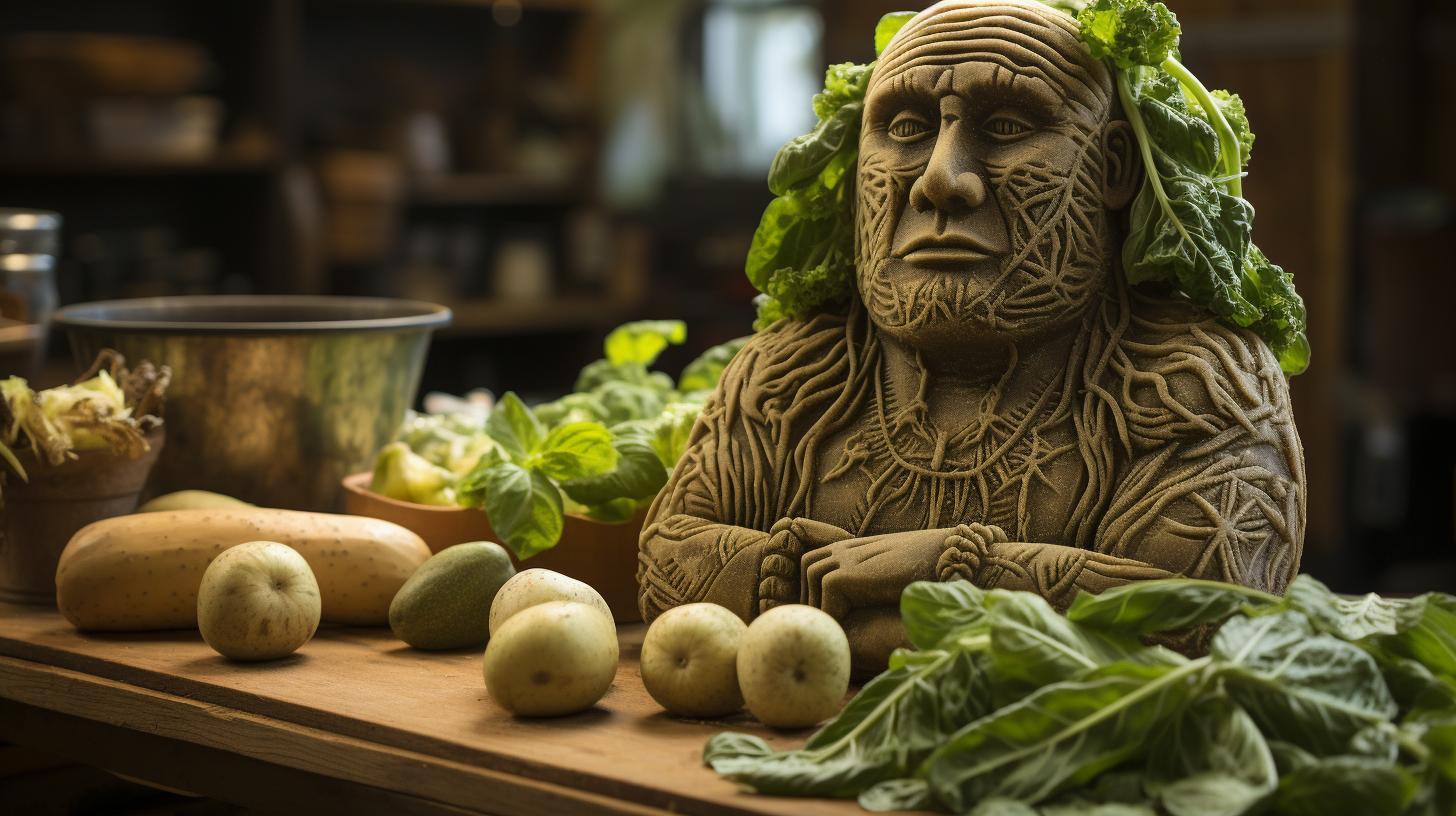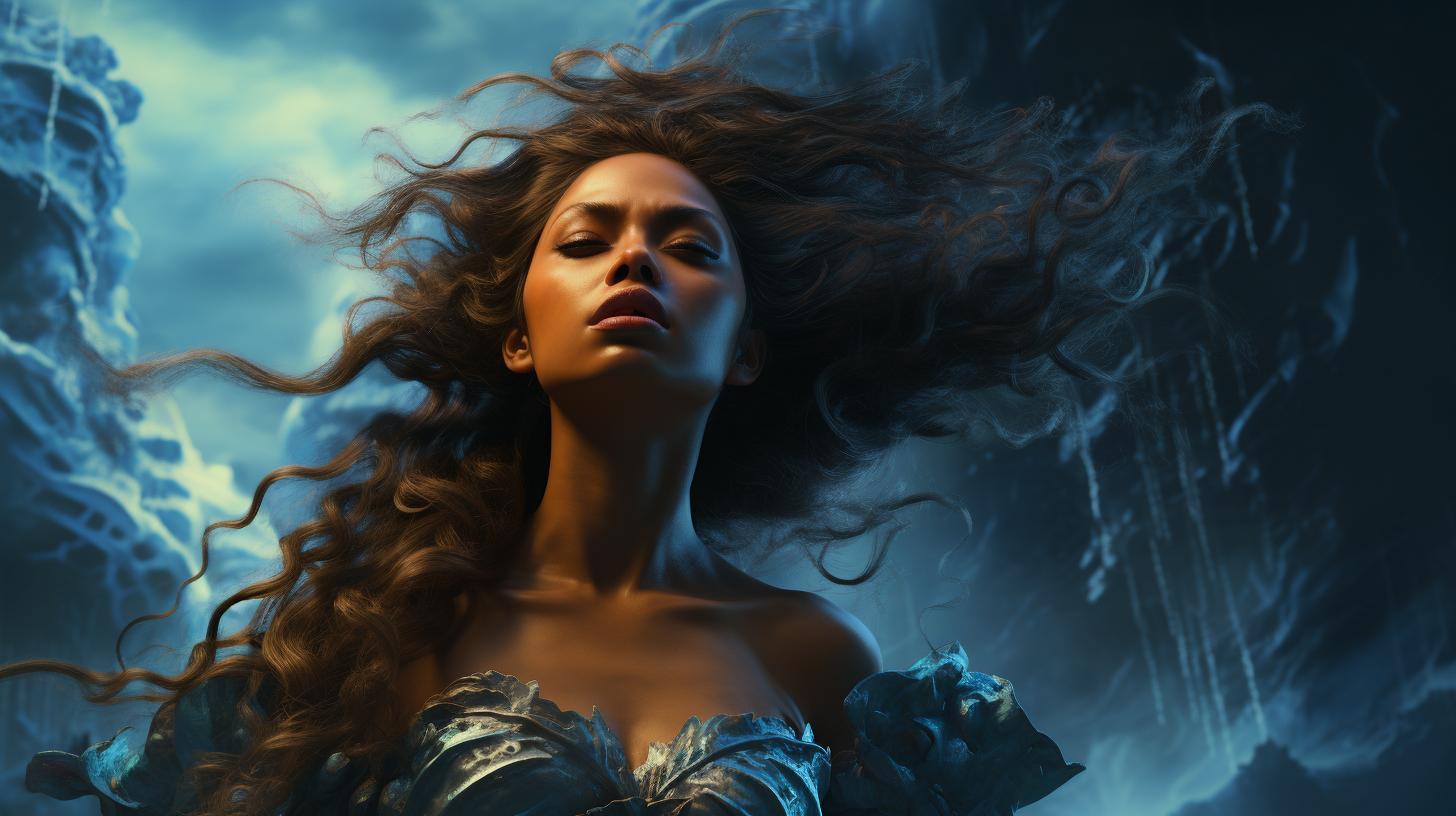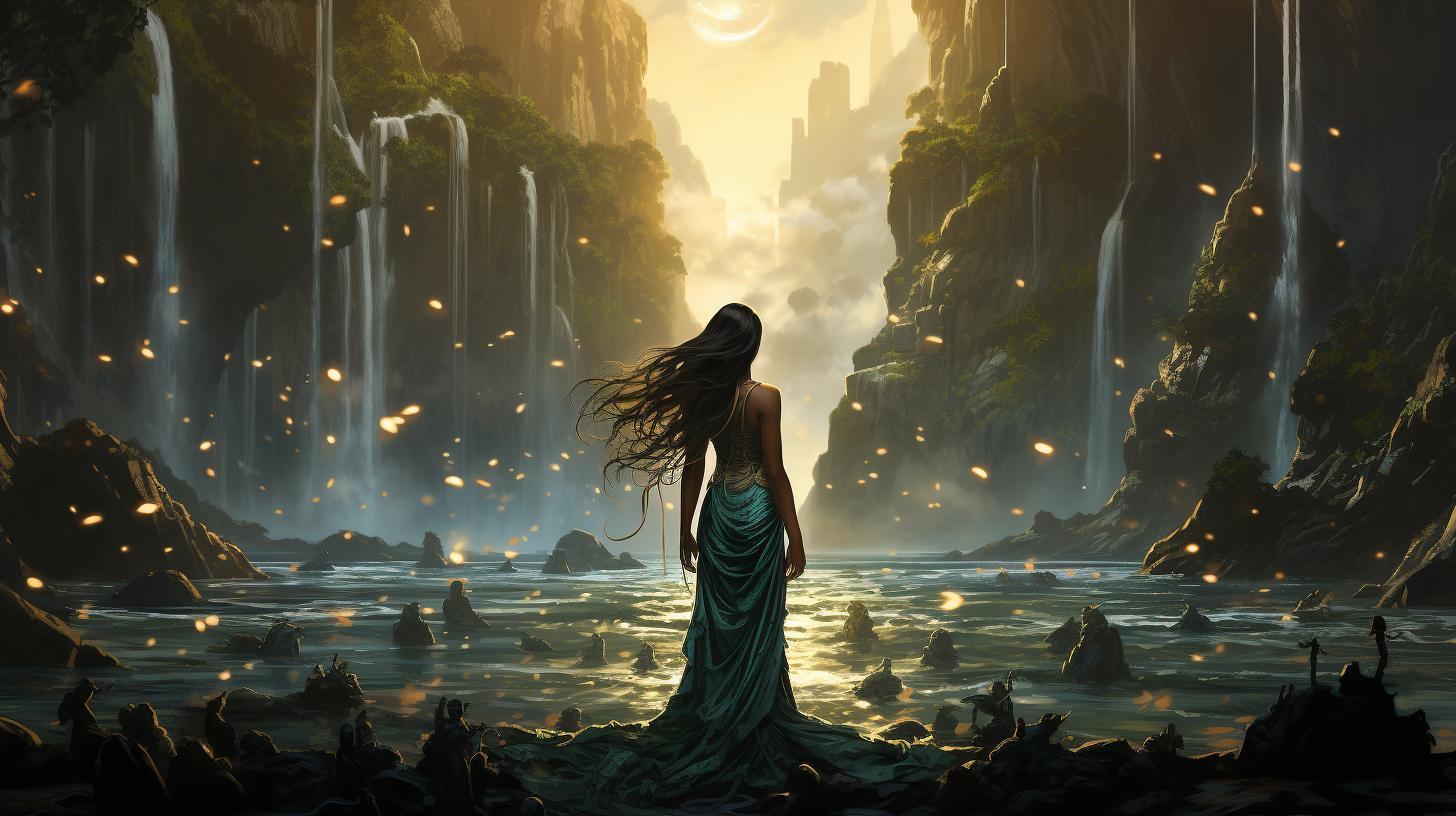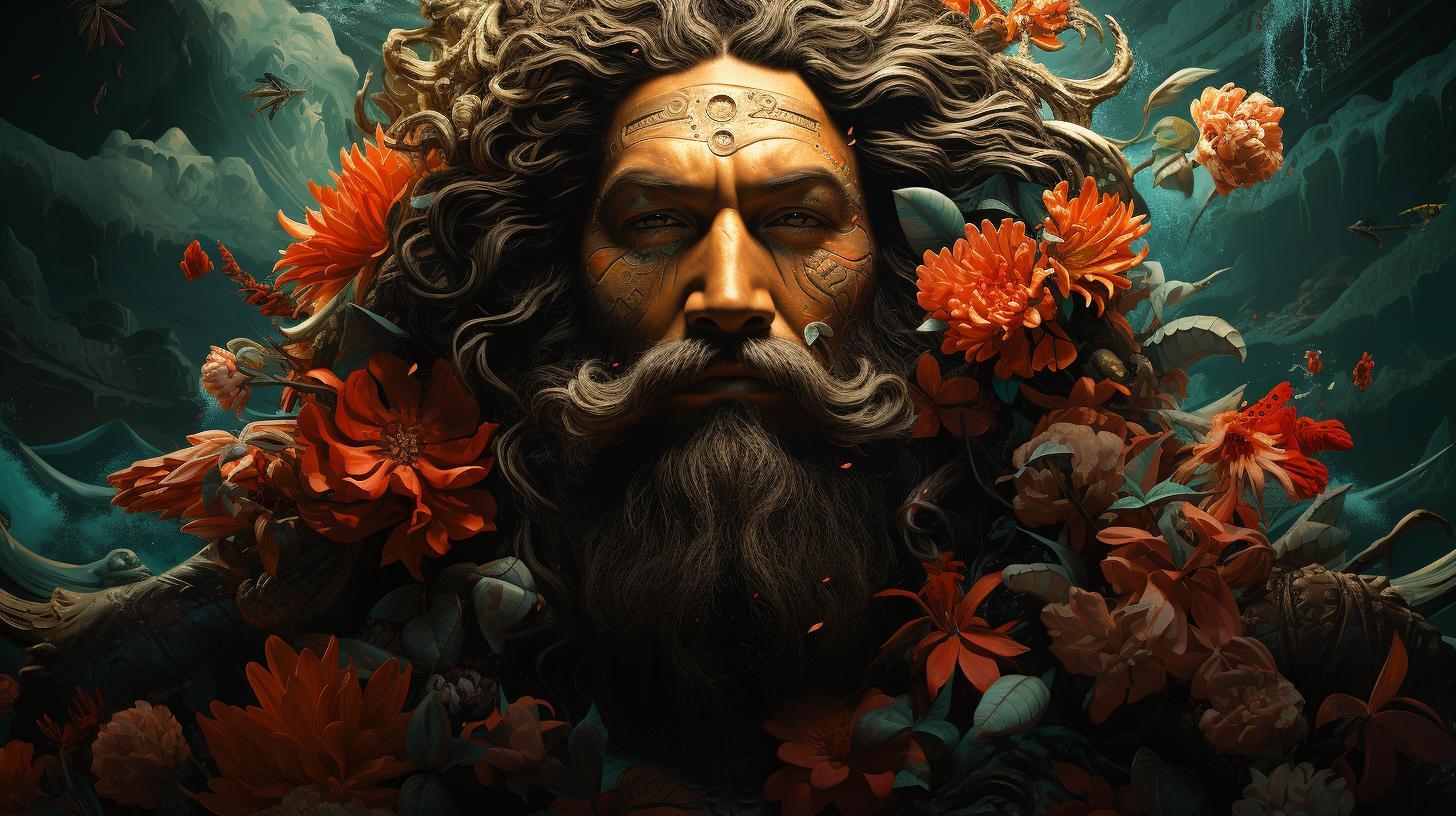Hawaiian Gods and Goddesses: Unveiling the Divine Pantheon of Hawaii
Hawaiian gods and goddesses play a significant role in the rich mythological heritage of Hawaii. From Kane, the god of creation and sky, to Kanaloa, the powerful god of the ocean and underworld, each deity represents different aspects of nature and life.
Lono, the god of fertility and agriculture, and Ku, the god of war and protection, are also revered. Other notable deities include Pele, the fiery goddess of volcanoes, Laka, the divine patroness of hula dance, Maui, the heroic demigod, and Haumea, the goddess of fertility.
These mythological figures hold deep cultural significance and have spurred the preservation and exploration of Hawaiian mythology in modern society.
The Creation Story: Kane, the God of Creation
The mythology of Hawai’i begins with the fascinating tale of creation, centered around Kane, the god of creation and the heavens. Kane plays a vital role in the origin of humanity, symbolizing the birth of the first people from red and white clay.
His creative powers extend beyond the human realm, encompassing the bountiful foods and wild plants, including trees and medicinal plants. Kane‘s dominion over the natural world highlights his significance as a provider and sustainer of life.
The Origin of Humanity: Kane‘s Role in Human Creation
Kane‘s profound influence is seen in his creation of the first humans out of clay.
According to Hawaiian mythology, he crafted individuals with great care and craftsmanship, imparting them with unique characteristics and traits.
The origin of humanity demonstrates Kane‘s profound role as the father of all beings, establishing a profound spiritual connection between humans and their divine creator.
The Power of Kane: God of Food and Plant Life
Besides being the progenitor of humanity, Kane also reigns as the god of food and vegetation. His association with the harvest, agricultural abundance, and wild plant life showcases his dominion over sustenance.
Hawaiian culture attributes the growth and vitality of crops, including the thriving forest ecosystems, to Kane‘s benevolent influence. He is revered for his ability to provide nourishment, emphasizing the profound interconnectedness between humans and the natural world.
Kanaloa: The Mighty God of the Ocean and the Underworld
Kanaloa, revered in Hawaiian mythology, holds immense power as the god of the ocean and the underworld. His existence is intricately connected to the complementary powers of Kane, the god of creation.
Together, they form a divine balance, representing the vastness and depths of the natural world.
Kanaloa‘s Relationship with Kane: Complementary Powers
Kanaloa‘s relationship with Kane goes beyond mere collaboration; it represents the harmony between the sky and the sea. As the god of creation, Kane brings life to the land and its inhabitants, while Kanaloa governs the mysterious depths of the ocean and the underworld.
Their complementary powers highlight the interconnectedness of all elements of nature within Hawaiian mythology.
Kanaloa‘s Transformative Abilities and Associations
Kanaloa possesses the unique ability to shape-shift, often taking the form of a magnificent giant octopus. This association with the mighty cephalopod underscores his dominion over the ocean and symbolizes his adaptability and transformative nature.
Kanaloa‘s presence can be felt not only through the mighty waves but also within the depths of the seas, commanding respect and awe from the Hawaiian people.
Lono: God of Fertility, Agriculture, Rain, and Music
Lono, a prominent deity in Hawaiian mythology, embodies the essence of fertility, agriculture, rain, and music. As one of the major gods, Lono is revered for his ability to bring bountiful harvests and joyous celebrations to the Hawaiian people.
Let’s explore the symbolism of Lono‘s feathers and staff, as well as his profound influence on the agricultural practices and festivities in Hawaii.
Symbolism of Lono‘s Feathers and Staff
Feathers hold great significance in Lono‘s representation. Adorned with a majestic crown of feathers, Lono exudes a sense of nobility and divinity. Feathers are considered a sacred and powerful symbol in Hawaiian culture, representing spiritual connections and the divine forces of nature.
Lono‘s staff, often depicted as a symbol of authority, signifies his role as a guardian and provider of fertility and abundance.
Lono‘s Influence on Harvest and Celebrations
Lono‘s presence is deeply interwoven in the agricultural practices of Hawaii. Farmers and cultivators look to Lono for guidance, seeking his blessings for a fruitful harvest. The arrival of Lono during the Makahiki festival, a four-month period, marks a time of feasting, games, and offerings to express gratitude for the abundance bestowed by the god.
The lively celebrations and rituals performed during this period foster a sense of community and strengthen the bond between the people and their land.
Ku: God of War, Politics, Agriculture, and Fishing
Ku is a significant deity in Hawaiian mythology, embodying various roles such as the protector of farmers and fishermen. Revered for his bravery and strength in battle, Ku is often depicted as a powerful warrior adorned with tattoos and wielding a spear.
Ku as the Protector of Farmers and Fishermen
Among the Hawaiian people, Ku is revered as a guardian figure for those involved in agriculture and fishing. Farmers and fishermen seek his blessing and protection for bountiful harvests and prosperous catches.
Ku’s association with agriculture highlights his importance in ensuring the sustenance and well-being of the community. His presence offers solace and confidence to those whose livelihoods depend on the land and sea.
Depiction of Ku: Warrior Attributes and Role in Battle
Ku’s portrayal as a fearless warrior reflects his role in defending the Hawaiian people in times of war. Wearing intricate tattoos and wielding a mighty spear, he symbolizes courage, resilience, and strategic prowess.
In battle, invoked by warriors seeking victory, Ku empowers them with his divine strength. His embodiment of martial skills and strategic acumen inspires fearlessness in defense of their land and people.
Through his multifaceted nature, Ku stands as a symbol of strength, protection, and resilience in Hawaiian mythology, leaving an indelible mark on the cultural identity of the Hawaiian people.
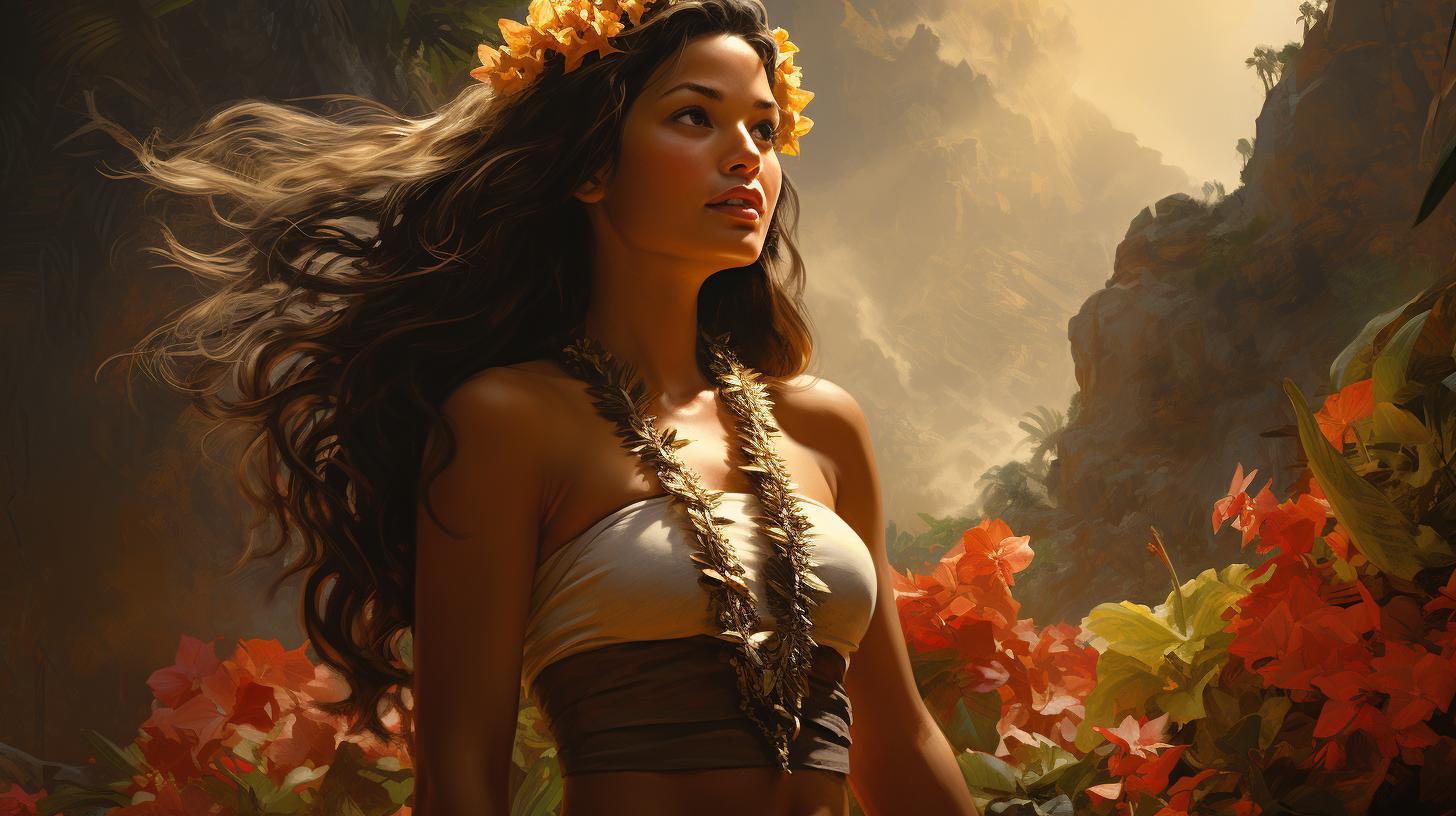
Discover the fascinating variety of gods and goddesses in Hawaiian mythology, each holding their own unique roles and significance within the culture. From fiery volcanoes to captivating hula dances, these deities have left an indelible mark on Hawaiian history and beliefs.
Pele: The Fiery Goddess of Fire and Volcanoes
Known as the goddess of fire and volcanoes, Pele is a powerful and awe-inspiring figure in Hawaiian mythology. She is believed to reside in the Halema’uma’u crater in the active Kilauea volcano, embodying the raw energy and destruction of volcanic eruptions.
Legends depict Pele as both beautiful and dangerous, with a temper as unpredictable as the flowing lava.
Laka: The Divine Patroness of Hula Dance
Laka is revered as the goddess of hula, the traditional Hawaiian dance. She is credited with the creation of hula and is honored through offerings and prayers during hula ceremonies.
Laka symbolizes beauty, love, and fertility, and her influence can be felt in the graceful movements and rhythmic chants of this cherished art form.
Maui: The Heroic Demigod with Magical Abilities
Maui, a revered figure in Hawaiian mythology, is known as a heroic demigod with incredible magical abilities. One of his notable achievements was harnessing the sun to extend daylight, providing more time for work and productivity.
Maui‘s tales of adventure and his unsuccessful attempt to grant immortality to humans have captivated generations, showcasing his resourcefulness and determination.
Haumea: The Goddess of Fertility and the Birth of the Islands
Haumea is the goddess of fertility and is associated with the creation and growth of the Hawaiian islands. She is considered the mother of Hawaii, embodying abundance and sustenance for the island’s inhabitants.
Haumea’s deep connection to nature and her ability to provide nourishment make her a revered figure in Hawaiian mythology.
The Cultural Significance of Hawaiian Gods and Goddesses
The gods and goddesses in Hawaiian mythology hold immense cultural significance within Hawaiian society. They are deeply incorporated into Hawaiian culture and traditions, playing a vital role in shaping the spiritual and social fabric of the islands.
Incorporation of Deities in Hawaiian Culture and Traditions
Hawaiian gods and goddesses are woven into everyday life, rituals, and ceremonies. Their presence is felt in various aspects of Hawaiian culture, such as hula dances, chants, prayers, and offerings.
These deities are revered and honored as guardians and protectors of the land, sea, and people.
The incorporation of deities in traditional practices is a way for Hawaiians to maintain a spiritual connection with their ancestors and the natural world. It reflects a deep respect and reverence for the divine forces that govern life and sustenance.
Legends and Stories: Oral Transmission of Mythology
The rich mythology of Hawaiian gods and goddesses is primarily preserved through oral traditions. Legends and stories passed down through generations serve as a means of transmitting the knowledge, wisdom, and values associated with these deities.
Through storytelling, Hawaiians not only share the tales of their gods and goddesses but also preserve their cultural heritage. These narratives provide insights into the origins of the islands, the relationship between humans and the divine, and the importance of respecting and harmonizing with nature.
Preservation of Hawaiian Mythology in Modern Society
Despite the suppression of the Hawaiian religion in the 19th century, there have been efforts to revive and preserve Hawaiian mythology in modern society. Cultural practitioners, scholars, and community organizations play a crucial role in fostering the understanding and appreciation of these ancient beliefs.
Today, there are initiatives focused on documenting and researching Hawaiian mythology, ensuring its preservation for future generations. These efforts aim to honor the cultural heritage of Hawaii and promote a deeper connection with the gods and goddesses that have shaped the identity and spirituality of the Hawaiian people.
- Hawaiian deities are deeply incorporated into daily life, rituals, and ceremonies.
- The oral transmission of mythology through legends and stories is a vital aspect of Hawaiian culture.
- Efforts are being made to revive and preserve Hawaiian mythology in modern society.
Exploring the Mythological Sites of Hawaii
Embark on a fascinating journey through the mythological sites of Hawaii, where ancient legends come to life.
Discover the sacred places associated with Hawaiian gods and goddesses, offering a glimpse into the rich cultural heritage of the islands.
Highlighting the Kilauea Crater: Pele‘s Abode
Delve into the volcanic wonders of Hawaii by exploring the remarkable Kilauea Crater, believed to be the dwelling place of the fiery goddess, Pele. Witness the power and beauty of this active volcano, its molten lava flows serving as a testament to Pele‘s presence and her role as the goddess of fire and volcanoes.
Manta Ray Bay: The Legend of Hina and Her Divine Connection
Immerse yourself in the captivating legend of Hina, a revered goddess said to have miraculous ties to the Manta Ray Bay. Experience the magic of swimming alongside these majestic creatures, understanding the spiritual connection that exists between Hina and the mesmerizing marine life that inhabit the bay.
The Historical Association of Deities with Hawaiian Islands
Explore the profound historical association between Hawaiian deities and the islands themselves. Each island holds its own unique connection to specific gods and goddesses, shaping the landscape and cultural beliefs. Uncover the hidden stories and legends that have shaped Hawaii’s geography and continue to influence the island’s spiritual essence.
Impact of Hawaiian Mythology on Contemporary Art and Media
Hawaiian mythology has left an indelible mark on contemporary art and media, inspiring countless artists, writers, and filmmakers. The rich tapestry of gods and goddesses, with their captivating stories and symbolism, has provided a wellspring of creative exploration.
Artists have incorporated Hawaiian deities into their works, portraying their power and beauty through various mediums. Painters have captured the vibrant imagery of the gods and goddesses, bringing them to life on canvas with vivid colors and intricate details.
Sculptors have sculpted statues and carvings, showcasing the physical forms of these divine beings.
Writers have also been influenced by Hawaiian mythology, weaving its enchanting narratives into their stories and novels. These tales transport readers to a world where gods and humans coexist, where epic battles unfold, and where the forces of nature shape destinies.
Through literature, the mythological tales continue to captivate and educate people about the rich cultural heritage of Hawaii.
Filmmakers have recognized the visual and narrative potential of Hawaiian mythology, creating movies and documentaries that showcase the gods and goddesses in all their glory. These films offer a visual spectacle, depicting the awe-inspiring landscapes of Hawaii and bringing the mythological characters to life through captivating performances and stunning visual effects.
- The divine tales have also found their way into music and performing arts, with artists drawing inspiration from the mythological figures. Musicians compose melodic pieces that echo the spirit of Hawaii’s ancient deities, capturing their essence in harmonies and rhythms.Dancers incorporate elements of mythology into their performances, gracefully embodying the gods and goddesses through hula and other traditional dance forms.
- The impact of Hawaiian mythology extends beyond artistic expressions. It has become a source of pride and cultural identity for the people of Hawaii, fostering a deeper connection to their roots.This profound appreciation for their mythological heritage is evident in the preservation of rituals, ceremonies, and celebrations that honor the gods and goddesses.
- Furthermore, the influence of Hawaiian mythology on contemporary art and media helps to educate and raise awareness about the cultural and spiritual significance of these deities.It provides a platform for dialogue and understanding, allowing people from different backgrounds to appreciate and learn from the rich tapestry of Hawaiian mythology.
Embracing Hawaiian Mythology: Tours and Experiences
Immerse yourself in Hawaiian mythology by embarking on captivating tours and experiences that delve into the rich cultural heritage of the islands.
Discover the enchanting world of the Hawaiian gods and goddesses through a variety of engaging activities and educational excursions.
Hawaiian Mythology Tours
- Join guided tours led by knowledgeable local experts, who will share fascinating stories and legends about the deities.
- Visit sacred sites associated with specific gods and goddesses, and learn about their significance in Hawaiian culture.
- Explore ancient temples and heiaus, where rituals and ceremonies honoring the deities took place.
Cultural Workshops
- Participate in workshops where you can learn traditional Hawaiian chants, dances, and rituals associated with the gods and goddesses.
- Create authentic handmade crafts, such as leis or traditional Hawaiian instruments, influenced by the mythology.
- Engage in storytelling sessions, where expert storytellers recount mythical tales passed down through generations.
Hawaiian Mythology Festivals
- Experience vibrant festivals that celebrate Hawaiian mythology, featuring performances, music, and traditional arts.
- Witness captivating hula performances dedicated to Laka, the goddess of hula dance, showcasing the beauty and grace of this ancient art form.
- Indulge in traditional Hawaiian cuisine inspired by the gods and goddesses, offering a delicious and culturally immersive experience.
Outdoor Adventures
- Embark on nature hikes led by knowledgeable guides, who will highlight the natural elements associated with the Hawaiian deities.
- Engage in ocean activities such as snorkeling, diving, or sailing, where you can explore the realm of Kanaloa, the god of the ocean.
- Participate in traditional fishing expeditions, connecting with Ku, the god of agriculture and fishing, as you learn about sustainable practices.
These captivating tours and experiences provide a unique opportunity to immerse yourself in the fascinating world of Hawaiian gods and goddesses.
Discover the spiritual and cultural significance of these deities while gaining a deeper understanding of Hawaiian mythology and its enduring influence in modern society.

